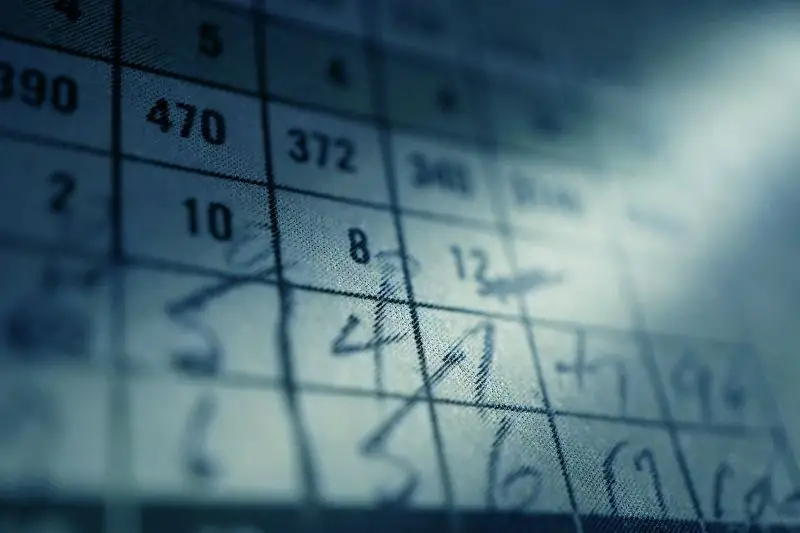In 2020, the USGA and the R&A both adopted the new World Handicap System so that it is now a uniform system no matter where in the world you play. It got more accurate but a lot more complicated.
Here’s how it works…
To calculate your golf handicap after the 2020 changes, you take the average of your 8 best Score Differentials which are each calculated by this formula: (113 / Slope Rating) x (Adjusted Gross Score – Course Rating – PCC adjustment). There may be additional adjustments made under some circumstances.
So the bottom line is that calculating your golf handicap isn’t really something you can do with a pen and paper…like you could before 2020.
If you want to know more, then keep reading.
What Is A Golf Handicap?
Your golf handicap is a way to measure your scoring potential and compare it to other golfers. It can be used to allow golfers of any skill level to compete against each other on a relatively even playing field.
A golf handicap can be used to classify golfers by skill level. For example, in order to enter a U.S. Open local qualifying event, you must have a handicap of 1.4 or below.
But probably the most common way most players use handicaps is to determine how many strokes one side should “give” the other in order to make the competition fair.
For example, if Player A has an 11 handicap and Player B has a 4 handicap, then Player B should give 7 strokes to player A. This can be applied to the total score if they are playing stroke play. If they are playing match play, then the typical way to give strokes is that Player B would give Player A one stroke on each of the 7 hardest holes (according to the scorecard).
There are other ways that a handicap can be used but the bottom line is that once you have a handicap, it opens up a lot of possibilities to compete with other golfers of any skill level.

What Is The World Handicap System (WHS)
The WHS is a new entity that was formed by the USGA and the R&A to manage golf handicaps for all golfers in the world. It was formed in 2020 to implement the new handicap system.
How Is Golf Handicap Calculated? (Post 2020 Version)
While the formula above seems pretty simple, it’s gotten a lot more complicated since the 2020 changes because of the additional factors that go into it. Here’s what those factors are.
Scoring Differential
Scoring differential is simply the score for a single round adjusted based on other factors that are designed to assess the difficulty of the course you just played.
This is used rather than your actual score to normalize the handicap index across any course no matter what the difficulty. A score of 82 at Bethpage Black is very different from an 82 at your average municipal course (yes, I know Bethpage is also technically a muni, but you get my point).
You can calculate the Scoring Differential for a single round with this formula: (113 / Slope Rating) x (Adjusted Gross Score – Course Rating – PCC adjustment).
So now let’s look at what those other variables are in the equation.
Adjusted Gross Score
Adjusted Gross Score is the score you got for the round with any adjustments for large scores on a single hole. “Gross” in this sense means before the handicap has been applied.
The maximum score you can record for handicap purposes is a “net double bogey.” “Net” in this sense means after any handicap adjustments have been made.
You can figure this one out on your own with a little math, but its a LOT easier if you just use a computerized system, but let’s keep going.
Slope Rating/Course Rating
Slope rating and course rating are ways in which the governing bodies of golf rate the difficulty of a course.
They are each a little different in that Course Rating is more or less what a scratch golfer can be expected to shoot and Slope Rating measures how much more difficult a course is for a high handicapper compared to a low handicapper.
Playing Conditions Calculation (PCC adjustment)
The Playing Conditions Calculation is new as of 2020 and is the one factor that you really can’t calculate yourself.
Exceptional Score Reduction
Exceptional Score adjustment takes place after you calculate your Scoring Differential for a single round. It is a way to eliminate players gaming the system to get an advantage in handicapped tournaments.
It kicks in if your score produces a Score Differential that is 7.0 strokes or more higher than your Handicap Index. If that happens then you make adjustments as follows:
- between 7.0 and 9.9 strokes better, a -1 adjustment is applied to the player’s most recent 20 Score Differentials in their scoring record.
- 10.0 strokes or more better, a -2 adjustment is applied to each of their most recent 20 Score Differentials.
Here’s a handy chart from the USGA on how to use exceptional score reduction.

Course Handicap Calculation Formula
A Course Handicap represents the number of strokes a player receives in relation to the UParU of the tees being played. The formula includes a Course Rating minus Par adjustment:
Course Handicap = Handicap Index × (Slope Rating ÷ 113) + (Course Rating – Par)
Once you have a Handicap Index, you can use that to calculate your Course Handicap so you can compare it to other golfers and determine how many strokes need to be given to make the match fair on that particular course.
Of course, you can always just use this simple Course Handicap Calculator from the USGA.
2020 Changes In Calculating A Golf Handicap
Basically, the entire handicapping system was changed in 2020. But most of the stuff happens behind the scenes when you use a handicapping service.
Here are some important changes you should know about.
1. Fewer Scores Are Used To Calculate Your Index
Prior to 2020, you would use the 10 best scores of your last 20. Now, you use the 8 best out of the last 20.
This change was made to make the handicap more responsive to good scores and reward consistent play.
2. Your Index Updates Every Day
If you have had a handicap in the past, then you might have been used to getting handicap updates on the 1st and 15th of every month. Now, handicaps are updated the day after you post a new score, no matter how often that is.
The purpose of this change was to make the handicap system more current with your game.

3. Net Double Bogey Is The Maximum Score On A Single Hole
The old way that the USGA guarded against inflating scores (sandbagging) was with something called Equitable Stroke Control (ESC). ESC was calculated on a sliding scale, depending on your course handicap (10-19 could take no more than a 7 on any hole, 20-29 took a max of 8, etc.).
The new World Handicap System uses net double bogey as the maximum on any single hole. This provides a much more consistent way of capping scores because it varies based on the par of the hole rather than a hard cap on the score.
4. Your Handicap Is Adjusted Based On Playing Conditions
This is probably one of the biggest changes in the handicap system. Now, when you enter a score, it’s connected to a centralized database and that score is compared to every other score entered from that course on the same day.
If the scores from a course on a specific day are unusually high or low for those players, then the system may apply an adjustment to all those scores to compensate.
If you really want to dive into the excruciating details of the new golf handicap system, check out this resource from the USGA.
Frequently Asked Questions
How do I get a golf handicap?
You can get a golf handicap through almost any golf course or club as well as through many online
How do I calculate a golf handicap for 9 holes?
To calculate a golf handicap for 9 holes, you simply divide the Course Rating and Slope Rating by 2 and use the formula (56.5 / Slope Rating) x (Adjusted Gross Score – Course Rating – PCC adjustment) to calculate your Score Differential for the 9 hole score.
When you are averaging yoru score differentials, use two 9 hole scores in place of one 18 hole score.
What is my golf handicap if I shoot 100?
If you shoot 100 on average then your handicap would be about 26-30, depending on the difficulty of the courses that you play regularly.
What is the average golf handicap?
The average handicap index for men is 14.2 and for women it is 27.5.3. The most common handicap index range for men is 13.0-13.9 (at 5.42% of male golfers or about 95,000 total).
But the 13-handicappers in the U.S. are barely the most common, holding just one-hundredth of an edge over the second-most common handicap, 12.0-12.9 (5.41%). That’s also slightly more than the third-most common handicap, 14.0-14.9, which is 5.37%.
